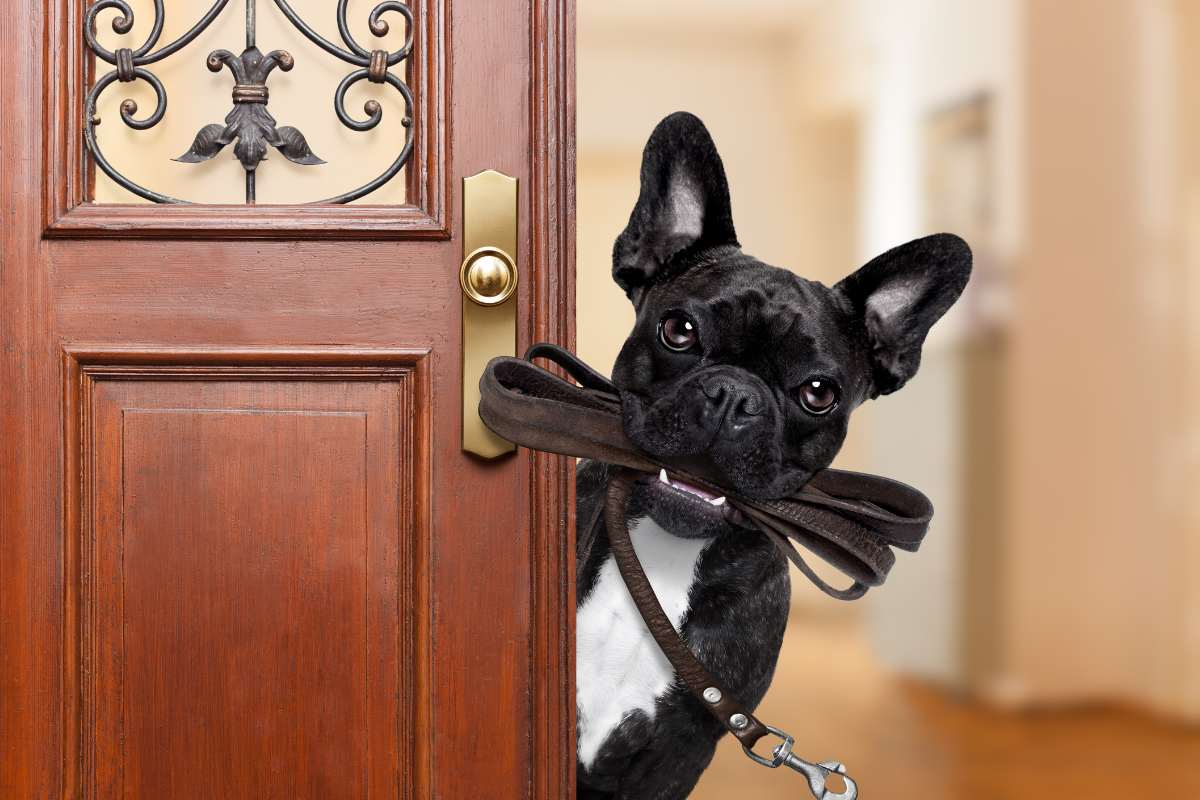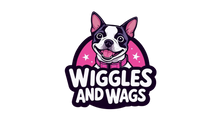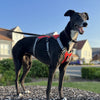Choosing the best Dog Lead - A Comprehensive Guide

As a devoted dog owner, one of the fundamental responsibilities is ensuring the safety and comfort of your canine companion during walks. Howver, choosing the bet dog lead is more than just choosing a strap; it involves considering your dog's size, temperament, and specific needs. In this guide, we'll explore the various types of leads available, factors to consider when making a choice, and tips for ensuring a pleasant and secure walking experience for both you and your furry friend.
Understanding the Different Types of Dog Leads
Before delving into the factors influencing your choice, let's explore the diverse types of dog leads available on the market.
Standard Flat Leads
These are the most common and straightforward type of dog leads. Typically made of nylon or leather, they come in various lengths and widths. Standard flat leads are versatile and suitable for dogs of all sizes, offering durability and ease of use.
Retractable Leads
Retractable leads feature a retractable cord housed in a plastic handle. They allow your dog more freedom to roam while still maintaining some control. These leads are popular for giving dogs the flexibility to explore their surroundings within a certain range.
Martingale Leads
Martingale leads, also known as limited slip or half-check leads, are designed to prevent dogs from slipping out of the lead. They consist of a loop that tightens when tension is applied, offering a balance between security and comfort. Martingale leads may not be suitable for every dog. Some dogs may find the sensation of the lead tightening uncomfortable or stressful, leading to anxiety or resistance during walks. It's important to gauge your dog's comfort level and response to this type of lead before using it regularly.
Chain Leads
Chain leads are made from metal links, providing durability and strength. They are often used for larger and stronger breeds, but it's essential to ensure that the chain doesn't cause discomfort for your dog.
Harness Leads
Harness leads combine the lead and harness into a single piece of equipment. They wrap around the dog's torso, distributing pressure more evenly and minimizing strain on the neck. Harness leads are ideal for dogs prone to tracheal issues or those with respiratory concerns.
Double ended harness leads
A double-ended harness lead, also known as a two-point or multi-functional lead, is a versatile dog lead that features two attachment points instead of the usual one. This design allows pet owners to have more control over their dogs and provides various configurations for walking and training. If you have a dog harness with a front and back clip, you can attach one end to the front of the harness and the other to the back, creating a no-pull effect. Alternatively, attaching both ends to the back of the harness can provide more control.
Slip Leads
A slip lead is designed as a closed loop, with one end forming a larger loop that can slip over the dog's head. The loop tightens when pressure is applied, creating a snug fit around the dog's neck. Certain breeds, especially those with short noses or respiratory issues, may be more susceptible to breathing difficulties when wearing a slip lead. The pressure applied to the neck can exacerbate pre-existing respiratory conditions, making slip leads unsuitable for these dogs.
Factors to Consider When Selecting a Dog Lead
Now that we've explored the different types of leads, let's delve into the crucial factors that should influence your decision-making process.
Size and Breed of Your Dog
Dogs come in various shapes and sizes, and the lead you choose should complement their individual needs. Larger breeds may benefit from sturdy and durable leads, while smaller dogs might find comfort in lightweight options. Consider the strength and pulling tendencies of your dog when selecting a lead that can handle the strain.
Your Dog's Temperament
A dog's temperament plays a significant role in lead selection. Energetic and excitable dogs might benefit from leads with features like shock absorption or hands-free options. For more anxious or reactive dogs, a calming harness lead might provide a sense of security.
Training Requirements
If you are in the process of training your dog, the lead you choose can influence the effectiveness of your training sessions. For example, a standard flat lead or a harness lead may offer better control during training exercises compared to a retractable lead.
Safety Features
Prioritize safety by opting for leads with features like reflective materials for nighttime walks. For dogs with a tendency to slip out of their leads, a martingale lead can offer added security. Additionally, inspect the lead regularly for wear and tear to ensure its continued reliability.
Comfort for Both Dog and Owner
Walking should be an enjoyable experience for both you and your dog. Consider the comfort of the handle for you and the material around your dog's neck or body. Features like padded handles and adjustable straps can contribute to a more comfortable experience.
Environmental Considerations
If you live in an area with various weather conditions, choose a lead that can withstand the elements. Water-resistant materials are beneficial for walks in the rain, and a lead that dries quickly can prevent discomfort for your dog.
Tips for choosing the best dog lead
Measure Your Dog
Before purchasing a lead, measure your dog's neck or chest, depending on the type of lead you're considering. Ensure that the lead is neither too tight nor too loose, providing a comfortable and secure fit.
Test the Strength
For larger or stronger breeds, choose a lead that can withstand their strength. Check the lead's weight rating to ensure it can handle the force exerted by your dog during walks.
Consider Lead Length
The length of the lead can influence the level of control you have over your dog. Short leads offer more control, while longer leads provide dogs with additional freedom. Choose a length that aligns with your walking preferences and your dog's behavior.
Introduce Gradually
If you are transitioning to a new type of lead, introduce it gradually. Allow your dog to become familiar with the lead in a controlled environment before taking it on a walk. This helps prevent anxiety or resistance during walks.
Regularly Check for Wear
Inspect your dog's lead regularly for signs of wear and tear. Frayed edges, weakened materials, or damaged hardware can compromise the lead's effectiveness and pose a safety risk. Replace worn leads promptly.
Invest in Comfort Features
If your dog tends to pull during walks, consider leads with padded handles or anti-pull features. These can enhance your comfort and control while minimizing strain on your dog's neck.
Tailor to Your Dog's Needs
Every dog is unique, so tailor your lead choice to your dog's specific needs. Whether it's a gentle harness lead for a small breed or a sturdy chain lead for a larger dog, understanding your dog's requirements is key to a successful selection.
Choosing the best dog lead is a decision that goes beyond aesthetics. It's about ensuring the safety, comfort, and happiness of your furry companion during every walk. By considering your dog's size, temperament, training needs, and environmental factors, you can make an informed decision that contributes to a positive and enjoyable walking experience for both you and your dog. Remember, a well-selected lead is not just a tool – it's a bridge that connects you and your canine friend on the wonderful journey of daily walks and adventures.
Wiggles and Wags provide a range of dog leads to suit all breeds. Why not explore the range.





